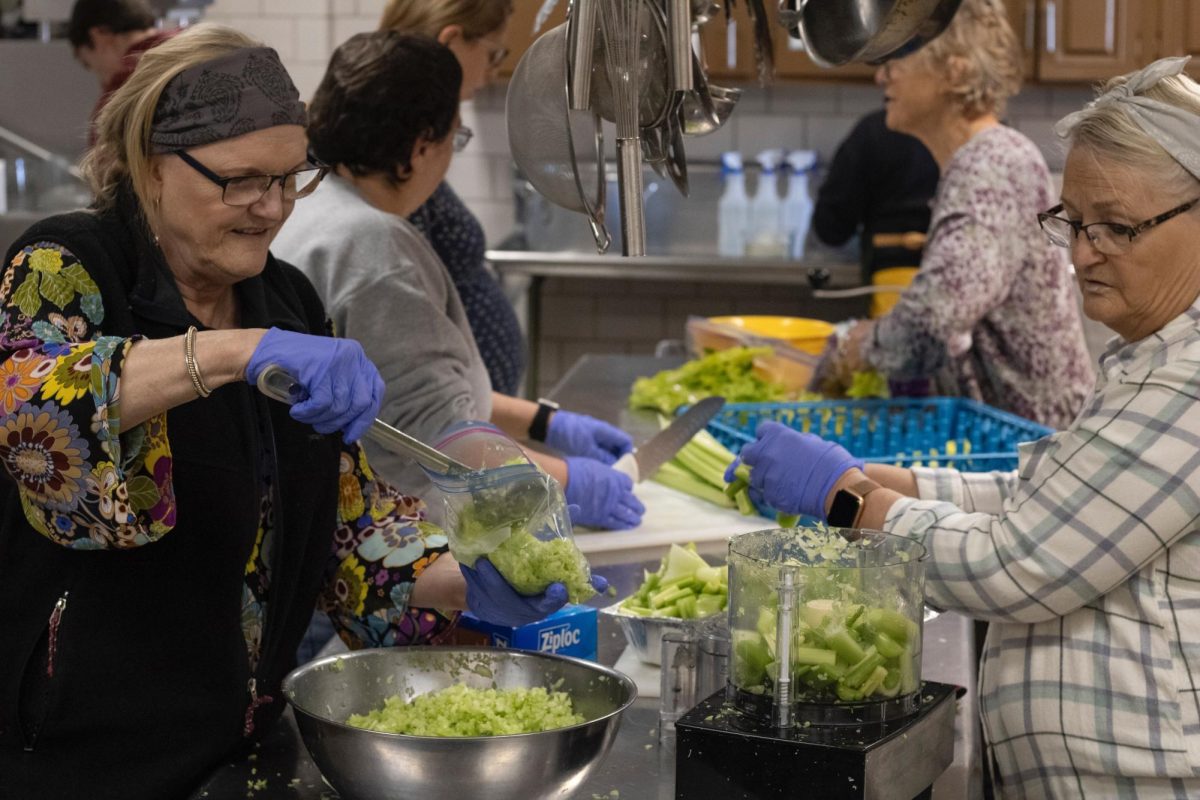In April, SIU will be partnering with NASA to gather vital data about the total solar eclipse that can be viewed at totality in Carbondale. NASA is giving a chief research group, SolarSTEAM Project, $2.6 million to support public engagement regarding the sun and its impacts.
Cori Brevik, a lead researcher and assistant professor of practice in the School of Physics and Applied Physics at SIU said, “One of the messages we’re trying to get across to the world is that the sun is everywhere. The sun literally touches everything in our lives.” SolarSTEAM wants to help people understand the world they live in, by making people more aware of the connections between them and the sun. The sun affects the clothes you wear. It affects the food you eat. It affects your transportation. It affects the climate and the weather,” Brevik said.
The team’s research is broken up into various themes. This year’s first big theme happens to be the solar eclipse. However, this project will expand beyond just that.
Advertisement
Brevik said, “SolarSTEAM is a long-term project. It is not just focused on the upcoming eclipse, but also on heliophysics in general.” This year the project will have numerous event themes based on different aspects of solar science.
Brevik said it is currently NASA’s Big Year of Heliophysics, or the sun’s relationship with the other celestial objects in our solar system. NASA has Big Years to celebrate key innovations, and this year SolarSTEAM hopes to continue its mission on campus.
Other events they will be hosting concern the Parker Solar Probe, which will be the closest probe to ever get near the sun, and an approaching solar maximum, where the sun is at its most active.
With its newest grant from NASA, the project’s ability to educate a broader audience, especially during the week of the solar eclipse, will increase even more.
Harvey Henson, principal investigator of SolarSTEAM, as well as associate professor in the School of Education and director of SIU’s STEM Education Research Center, said, “Eclipses happen all over the world. About every year and a half, two years. You just have to be in the right spot when it happens and look up.”
SolarSTEAM and the events it is hosting are mainly focused on the U.S., but its efforts have the potential to reach far beyond.Brevik said, “The goal is to get people into the path of the eclipse. A partial eclipse is fine. But it is not the amazing thing that totality is, and so we really want to encourage people to just go wherever you can get to go see it.”
The project has nationwide engagement and consists of a large team; several people at SIU, the planetarium of Chicago, Johns Hopkins University Applied Physics Lab and two NASA centers.“As a scientist, a science educator, that’s an ideal situation because we can capture and engage with these phenomenons and get the chance to interact with a larger audience,” Henson said.
Advertisement*
Before SolarSTEAM was able to connect with other organizations and become more widespread, it first needed to gain traction on campus and in the community.
“Maybe none of us would have known the impact of having two total eclipse events and all the other astronomical events happening at Carbondale, without Bob Baer,” Henson said.
Baer is Director of the Physics Department’s public astronomy observation program and co-chair of the Southern Illinois Eclipse 2017 – 2024 Steering Committee. His enthusiasm to inform the public of these discoveries helped to jump-start the eclipse day celebrations at SIU.
“After I got done freaking out about the fact that we’re going to see two total solar eclipses in seven years and the centerline of both of those eclipses comes over Carbondale, then all the work started,” Baer said.
This discovery got Carbondale its initial point on the map, but the work needed to offer solar eclipse-related events in 2017 (and eventually 2024), included a long and tedious proposal process.
Due to the success the program had in 2017, Baer said, the team was able to draw attention back to Carbondale for this upcoming eclipse.
“We didn’t have the kind of attention on us externally for 2024, at least not from the public and the media, until we started engaging and writing proposals and getting grants,” Baer said.
Over time, the efforts have become more widespread, allowing for new research opportunities and involvement.
Henson said, “Between Bob Baer and I, we have five grants: science research; heliophysics research; educational research; engagement; broadcasting and arts.”
These grants, while useful to the organization and to the eclipse events, do not limit their broad goal of having other heliophysics-related projects.
“Many of those other projects are supported by sponsors, by university funds and just by donations,” Henson said.He said many people have given up their precious time to put events on and make them free for SIU students.“None of us would be here without students. Why would we? We’ve taken that same mentality, that same service mindset to all of this,” Henson said.
The team hopes to provide and facilitate unique opportunities, so that students can make the most of their eclipse week and learn more in the process by attending and volunteering for events.
Baer said students who volunteer at the eclipse events at Saluki Stadium get to apply their knowledge firsthand and get a front row view of the activities, including working personally with people from NASA. Volunteering is a chance for extra professional development for students as well. Students majoring in communication and arts will have many opportunities to create content about the eclipse.
Brevik said, “Karla Berry over in Media Arts has a huge team of students who are building videos; they’re doing web content. It’s not just a sciency event. There’s all these pieces connected.”
Volunteers will be filming the sun during the eclipse. The livestreams will be broadcast throughout the world, and there will be a chance that their feed may be used by NASA.
“We also have an astro-photography team on campus. That is made up of people from any major and no astronomy or photography background is required,” Brevik said.
If students are interested in doing research with this group they should get involved with their student programs. SolarSTEAM has started an Eclipse Chasing program, which is a study abroad group.
Brevik said, “We went to the Australia eclipse last April. In a few years we’ll be going to Spain, and then to Africa to witness total solar eclipses, so there’s some really good study abroad opportunities that anybody can take.”
Henson said, “As an educator, most of what we learn is outside the classroom, especially because we get the chance to apply our knowledge. This event is a life-changing application.”
SolarSTEAM will be offering once in a lifetime opportunities to members of the Carbondale community this year, and hopes people everywhere take a moment to learn more about the impacts of heliophysics.
“One of my personal goals is to have as many people as possible experience the eclipse for themselves, and just have that moment of personal appreciation,” Henson said.
For any additional information about eclipse day events and the work SolarSTEAM has been working on, as well as volunteer opportunities and future projects see eclipse.siu.edu.
News Reporter:- Annalise Schmidt
Photo edited by Day Starr-fleming
Advertisement















